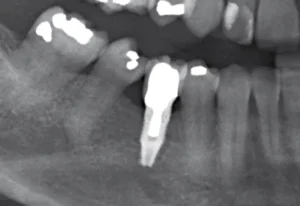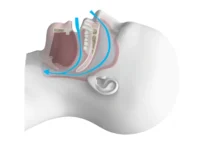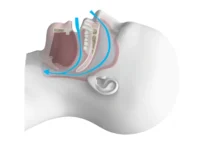Dental bone loss occurs when the bones supporting the teeth diminish in density and volume, often resulting in loose teeth or tooth loss. Key causes include periodontal disease, trauma to the jaw, specific diseases like diabetes, and lifestyle habits such as smoking. Preventative measures involve maintaining good oral hygiene, regular dental checkups, and avoiding risk factors. Understanding these can help in maintaining not only oral health but overall well-being.
Causes of Dental Bone Loss
Dental bone loss is a serious condition that can affect both the function and appearance of your smile. The loss of alveolar bone—the bone that surrounds and supports your teeth—can lead to tooth mobility and even tooth loss. Understanding the causes of dental bone loss is essential for effective prevention and treatment. Some of the most prevalent causes include periodontal disease, tooth extraction, trauma, and systemic conditions.
When the bone surrounding teeth diminishes, it can weaken the overall dental structure and complicate oral hygiene practices. This makes the remaining teeth more vulnerable to decay and further bone loss. By understanding the underlying causes of dental bone loss, we can take proactive steps to prevent this condition and maintain a healthy smile for life.
Addressing dental bone loss early through appropriate treatments such as bone grafting, dental implants, and guided bone regeneration can restore both function and aesthetics. Each cause of bone loss requires a specific approach for management and treatment, and an individualized plan is crucial for optimal outcomes.
Periodontal Disease
Periodontal disease, also known as gum disease, is one of the primary causes of dental bone loss. The condition begins with the accumulation of plaque—a sticky, bacteria-rich biofilm—on the teeth. If not adequately removed through regular brushing and flossing, plaque can harden into tartar, which can only be removed by a dental professional. Over time, the bacteria in plaque and tartar can cause inflammation of the gums, known as gingivitis.
If left untreated, gingivitis can progress to periodontitis, a more severe form of gum disease that affects the bone and supporting structures of the teeth. In periodontitis, the body’s immune response to the bacterial infection can lead to the destruction of bone and connective tissue, resulting in dental bone loss. The progression of periodontitis includes:
- Chronic inflammation and infection
- Loss of attachment of the gums to the tooth
- Formation of periodontal pockets
- Bone resorption adjacent to the affected areas
Research indicates that periodontal disease is the leading cause of tooth loss in adults. The bone loss associated with periodontal disease can vary from mild to severe and often requires comprehensive periodontal treatment to manage. Scaling and root planing, antimicrobial treatments, and, in advanced cases, surgical interventions are key components of periodontal therapy aimed at halting disease progression and preserving bone structure.
Prevention is crucial in combating periodontal disease and the associated bone loss. Maintaining excellent oral hygiene, including brushing twice a day, flossing daily, and regular dental check-ups, can significantly reduce the risk of developing periodontal disease. Additionally, lifestyle factors such as a balanced diet, avoiding tobacco use, and managing conditions like diabetes can also help maintain healthy gums and bones.
For more information on this topic and to explore various treatment options, be sure to check out our other articles.
Prevention Strategies for Dental Bone Loss
Dental bone loss is a serious condition that can lead to significant oral health issues, including tooth loss and changes in facial structure. Preventing dental bone loss requires a comprehensive approach that includes professional dental care, good oral hygiene, and a healthy lifestyle. Understanding and implementing effective prevention strategies can help maintain bone density and overall oral health. Key prevention strategies for dental bone loss include regular dental check-ups, proper oral hygiene, and maintaining a healthy diet. These approaches work in synergy to protect the bone structure within the mouth, prevent disease, and promote long-term dental health. In this article, we will delve into each of these strategies to provide a thorough understanding of how they contribute to preventing dental bone loss.
Regular Dental Check-ups
Frequent visits to the dentist play an essential role in preventing dental bone loss. During these check-ups, your dentist can identify early signs of bone loss, gum disease, and other dental issues that could contribute to bone deterioration. Early detection allows for timely intervention, which can prevent further damage and promote healing.
Regular dental check-ups typically include professional cleanings, examinations, and occasionally, X-rays to monitor bone health. During the cleaning, dental hygienists remove plaque and tartar buildup, which are primary contributors to gum disease and bone loss. Examinations help in identifying any changes in your oral health, and X-rays provide a detailed view of your bone structure, helping to detect issues that are not visible to the naked eye.
In addition to professional cleaning and examinations, your dentist may also recommend specific treatments or procedures aimed at preserving bone density. These could include fluoride treatments, scaling and root planing, or more advanced periodontal therapies depending on your individual needs.
Proper Oral Hygiene
Maintaining proper oral hygiene is crucial in preventing dental bone loss. Daily brushing and flossing are fundamental practices that help remove plaque, a sticky film of bacteria that leads to gum disease and subsequent bone loss if not controlled. Using a soft-bristled toothbrush and fluoride toothpaste, brushing at least twice a day, and flossing daily are effective methods to keep your mouth clean and free from harmful bacteria.
In addition to brushing and flossing, using an antibacterial mouthwash can provide extra protection against plaque and gingivitis. Mouthwash reaches areas in the mouth that brushing and flossing might miss, reducing the risk of gum disease and bone loss. It’s important to choose a mouthwash that’s designed for fighting oral bacteria and to use it as directed by your dental professional. Other strategies to enhance oral hygiene include regular replacement of your toothbrush (every three to four months), using interdental brushes or water flossers for hard-to-reach areas, and ensuring you do not skip your nightly oral care routine. These practices collectively help in maintaining a healthy oral environment and preventing conditions that can lead to bone loss.
Healthy Diet
A healthy diet plays a significant role in maintaining bone density and overall oral health. Certain nutrients are essential for bone health, particularly calcium and vitamin D. Calcium is a key component of bone tissue, while vitamin D is crucial for the absorption of calcium in the body. Incorporating foods rich in these nutrients, such as dairy products, leafy greens, and fortified cereals, can help maintain strong bones.
Other important nutrients for bone health include phosphorus, found in foods like fish, meat, and dairy, and magnesium, present in nuts, seeds, and whole grains. A balanced diet that includes a variety of these nutrients supports overall bone health and helps prevent dental bone loss.
Limiting the intake of sugary and acidic foods is also important, as these can contribute to tooth decay and gum disease, both of which are risk factors for bone loss. Instead, focus on a diet rich in fruits, vegetables, lean proteins, and whole grains. Drinking plenty of water helps to maintain oral hygiene by washing away food particles and maintaining saliva flow, which is essential for neutralizing acids in the mouth.
By incorporating these prevention strategies into your daily routine, you can significantly reduce the risk of dental bone loss and maintain a healthy, strong smile. Stay informed and proactive about your oral health, and explore our other articles to learn more about maintaining optimal dental health.
Treatment Options for Dental Bone Loss
Dental bone loss can be a significant concern for many patients, impacting both oral health and aesthetic appearance. Fortunately, advancements in dental technology and procedures offer various treatment options to restore bone structure and function. These treatments aim to replace lost bone tissue, promote natural bone regeneration, and provide a stable foundation for dental implants.
Each treatment option varies in complexity, cost, and effectiveness, making it essential for patients to consult with a dental specialist to determine the best course of action. This article explores some of the most common and effective treatment options for dental bone loss, including bone grafts, guided tissue regeneration, and dental implants.
Bone Grafts
Bone grafting is one of the most common and effective methods for treating dental bone loss. It involves transplanting bone tissue to the affected area to promote bone regeneration and provide a stable foundation for dental implants. The transplanted bone can be harvested from the patient’s own body (autograft), a donor (allograft), or synthetic materials (alloplastic graft).
The success of a bone graft largely depends on the patient’s overall health, the extent of bone loss, and the location of the graft. Studies have shown that autografts tend to have the highest success rate because they use the patient’s own bone tissue, thereby reducing the risk of rejection and infection. However, allografts and synthetic grafts are also effective and are often used when sufficient autologous bone material is not available.
The bone grafting procedure typically involves several steps, including:
- Preparation of the recipient site
- Harvesting the donor bone
- Transplanting the bone to the recipient site
- Suturing the site and allowing for healing
Recovery time can vary, but most patients can expect to resume normal activities within a few weeks. Regular follow-ups with the dentist are essential to monitor the healing process and ensure the success of the graft.
Guided Tissue Regeneration
Guided tissue regeneration (GTR) is a surgical procedure that aims to regenerate lost periodontal structures, including bone. This technique involves placing a barrier membrane between the bone and soft tissues to direct the growth of new bone and tissue. The membrane prevents the fast-growing soft tissues from occupying the space where the bone should regenerate.
GTR is often used in conjunction with bone grafting to enhance the success of bone regeneration. Studies have demonstrated that combining these procedures can significantly improve the outcomes compared to using either technique alone. The barrier membrane can be made of resorbable or non-resorbable materials, with each type offering specific benefits and drawbacks.
The procedure involves several steps:
- Preparing the site by cleaning and debriding the area
- Placing the barrier membrane
- Potentially adding bone graft material
- Suturing the site
Patients undergoing GTR may experience some discomfort and swelling post-operatively, but these symptoms usually subside within a few days. The key to successful GTR is meticulous surgical technique and careful postoperative care to ensure that the membrane and any graft material remain in place during the healing process.
Dental Implants
Dental implants are often considered the gold standard for replacing missing teeth, offering a permanent and natural-looking solution. Implants are titanium posts surgically inserted into the jawbone, serving as artificial tooth roots. Over time, the bone fuses with the titanium through a process called osseointegration, providing a strong and stable foundation for prosthetic teeth.
The success of dental implants largely depends on the quantity and quality of the jawbone. In cases of significant bone loss, bone grafting procedures are typically performed beforehand to ensure there is enough bone to support the implants. This prerequisite makes implants a multifaceted approach to treating both bone loss and tooth loss.
The dental implant procedure can be broken down into several phases:
- Initial consultation and treatment planning
- Surgical insertion of the implant post
- A healing period for osseointegration
- Attachment of the abutment and prosthetic tooth
Most patients find dental implants to be a worthwhile investment, as they offer significant advantages over other tooth replacement options. These include improved function, aesthetics, and longevity. Regular dental check-ups and good oral hygiene are crucial for maintaining the health and longevity of the implants.
If you found this information helpful, you may be interested in other articles that delve deeper into these treatments and explore additional options for maintaining optimal oral health.
Frequently Asked Questions About Dental Bone Loss
Understanding dental bone loss is crucial to maintaining oral health. Here are some common questions and answers to help clarify the nature of dental bone loss and its management.
What are the main causes of dental bone loss?
Dental bone loss can occur due to several factors but the most common include periodontal disease (gum disease), which is caused by the buildup of plaque and tartar that leads to inflammation and degradation of the jawbone. Other causes include tooth extraction, where the absence of a tooth leads to bone resorption, and conditions like osteoporosis which reduce the density of bones overall, including the jawbone.
How can dental bone loss be prevented?
Preventing dental bone loss starts with good oral hygiene practices such as brushing twice a day, flossing daily, and regular visits to the dentist for cleanings and check-ups. Limiting the intake of sugary foods and acidic beverages, which contribute to tooth and bone degradation, is also beneficial. Additionally, addressing dental problems promptly, like treating gum disease or replacing missing teeth with implants, helps prevent the progression of bone loss.

My name is Salman Kapa, a 73-year-old expert in bone regeneration and dental implantology. With decades of experience in the field, I am dedicated to advancing our understanding of oral health and hygiene. Through my research and writing, I aim to contribute to the development of innovative solutions in dental care.




